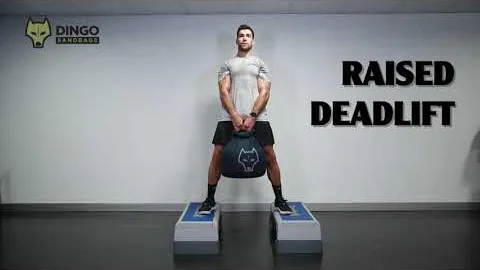
Are you looking to enhance your lower body strength and functional power? Look no further than the heavy sandbag raised deadlift exercise. This challenging and effective workout targets multiple muscle groups, improves overall strength, and boosts your ability to perform daily activities with ease. In this article, we will explore the benefits of the heavy sandbag raised deadlift exercise, how to perform it correctly, and some tips to maximize your results.
The heavy sandbag raised deadlift exercise is a compound movement that primarily targets the muscles in your lower body, including the glutes, hamstrings, quadriceps, and lower back. However, it also engages your core, grip, and upper body muscles, making it a full-body workout. Here are some key benefits of incorporating this exercise into your fitness routine:
1. Builds Lower Body Strength
The heavy sandbag raised deadlift exercise is an excellent way to build strength in your legs and hips. As you lift the sandbag from a raised position, you activate your posterior chain, including your glutes and hamstrings, which are vital for powerful movements such as sprinting, jumping, and lifting heavy objects.
2. Enhances Functional Power
Functional power refers to the ability to perform everyday activities with efficiency and ease. The heavy sandbag raised deadlift exercise trains your muscles to work together while mimicking motions you may encounter in daily life, such as bending down to pick up a heavy grocery bag or lifting a piece of furniture. By improving your functional power, you can reduce the risk of injuries and improve your overall quality of life.
3. Promotes Stabilization and Balance
To successfully perform the heavy sandbag raised deadlift exercise, you need to stabilize the sandbag and maintain balance throughout the movement. This not only strengthens your lower body muscles but also improves your overall stability and coordination. Improved stability can help prevent falls and injuries, especially as we age.
4. Increases Caloric Expenditure
Since the heavy sandbag raised deadlift exercise engages multiple muscle groups and requires substantial effort, it leads to a higher caloric expenditure compared to isolation exercises. By incorporating this compound movement into your workout routine, you can increase your overall calorie burn, aiding in weight loss and body composition goals.
To perform the heavy sandbag raised deadlift exercise correctly and safely, follow these steps:
Step 1: Set up
Step 2: Assume the starting position
Step 3: Lift the sandbag
Step 4: Lower the sandbag
Step 5: Repeat
To maximize the effectiveness of the heavy sandbag raised deadlift exercise, consider the following tips:
1. Start with a lighter sandbag weight
If you are new to this exercise, start with a lighter sandbag to focus on mastering the correct form and technique. As you become more comfortable and proficient, gradually increase the weight to challenge your muscles further.
2. Engage your core throughout the exercise
Maintaining a strong and engaged core is essential for proper form and stability. Before lifting the sandbag, take a deep breath, brace your core, and maintain this tension throughout the movement.
3. Focus on quality over quantity
It's crucial to prioritize proper form and range of motion over the number of repetitions or the weight lifted. Performing the exercise correctly will ensure that you're engaging the right muscles, minimizing the risk of injury, and maximizing your results.
4. Gradually progress the weight
As you become more comfortable and proficient with the heavy sandbag raised deadlift exercise, gradually increase the weight to continually challenge your muscles and encourage strength gains.
5. Rest and recover
Allow your muscles adequate time to recover between exercise sessions. Resting allows your muscles to repair and grow stronger, helping you achieve optimal results and prevent overuse injuries.
In conclusion, the heavy sandbag raised deadlift exercise is an excellent addition to any fitness routine. This compound movement targets multiple muscle groups, builds lower body strength, enhances functional power, promotes stabilization and balance, and increases caloric expenditure. By following proper form, engaging your core, and gradually increasing the weight, you can maximize the benefits of this exercise and achieve your fitness goals. Start incorporating the heavy sandbag raised deadlift exercise into your workouts today and experience the difference it can make in your strength and overall well-being.
If you're looking for a gym, fitness club or yoga studio, you've come to the right place.
You can find information about gyms in your area. Browse catalog of gyms and find gyms with classes which are you looking for.
On gym page you can find simple information like address, phone or website. You can find list of available classes. You can check availability of personal training or small group classes. On place page you can also see information about open hours.
You can find gyms near you with amenities, courts, studios and equipments.
Use our map to find gym at your city or district.
In Gym Navigator you can find list of exercises with movies for many body parts.
You can browse exercises catalog and find exercises the best of you.
You can also find exercises grouped into workout plans, which you can use to improve you body. Each routine show you exercises one by one and give you possibility to count you progress and count down rest time.